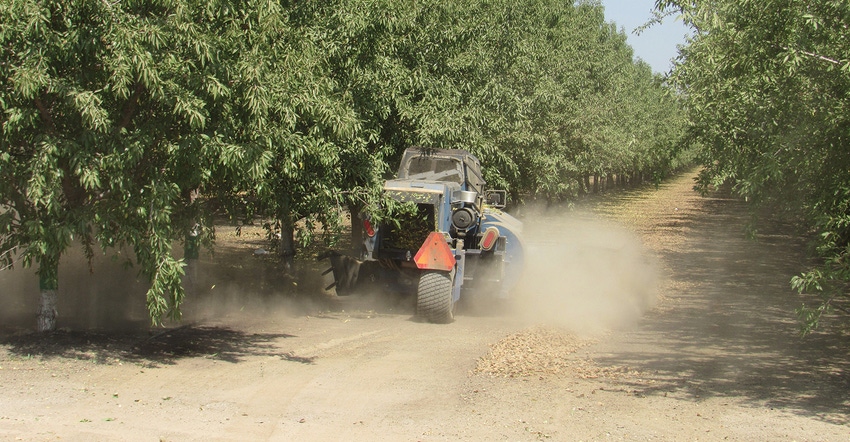
It’s all a matter of perspective it seems.
While the Almond Board of California placed an early 2021 focus on “High Moisture Content in Almonds Delivers Lower Returns,” Michael Kelley, president and CEO of Central California Almond Growers Association says he’s more concerned about an early harvest of reduced quality, drier nuts with an excessive amount of stick tight.
ABC’s editorial emphasis in its June missive dealt with moisture management. “Huller-sheller-processors can create a cascading series of difficulties that affect not only ‘wet’ nuts, but also the nuts around those with high moisture content. It becomes evident when they are well beyond the critical 6% moisture content.”
A call to CCAGA asked if they shared those moisture concerns this season. Their reply indicated greater problems in other directions.
“With regard to this year’s harvest, we’re predicting a substantial amount, especially on the west side of the San Joaquin Valley, and we expect they will be delivered early due to the lack of water,” Kelley said.
How early? “Probably sometime in late July/early August, which would be very unusual for us as we see the traditional influx closer to the middle of August,” he said. “There are just going to be some fields that due to the lack of water, where product will be harvested early and we expect poor quality when it’s delivered. Smaller and extremely dry with an excessive amount of stick tight that didn’t have a suture and never opened up leaving the kernel inside. We can get it out, but we have to hit it really hard with our crackers and in the course of doing that, we have chipping and breakage.”
Kelley doesn’t anticipate any major increase in volume despite some production coming in early. “The crop is going to come in early which will take a little bit of pressure off of us during the normal peak delivery period. We anticipated 160 million pounds last year but ended up at 155 million. This year we’re anticipating we’re going to probably be at about 135 million and are budgeting for 136,500,000 pounds.”
Labor shortages
So, if moisture and overall volume won’t be problematic, what will?
“In the environment we’ve got now, we’ll be lucky to find people to do the needed jobs because nobody wants to go to work,” he said. “We can’t even get them to come in and fill out an application. Our application rates are down 70% from where they were at this time last year, so our biggest concern will be getting labor to be able to run our four shellers. It’s a scary situation not to be able to find seasonal labor. We’re hoping the government support that’s keeping people at home will go away so we can get people who actually want to work, and that’s my biggest worry right now.”
Kelley says: “The crop is already down from previous record levels and the drought makes it a bit harder to predict what will happen this year, but we expect some difficulties with quality in that the product could be very dry. If that’s the case, shelling becomes more difficult in an exceedingly dry environment because the chance for damaging the kernel goes up exponentially as you get below 4% moisture.”
Read more about:
AlmondsAbout the Author(s)
You May Also Like




